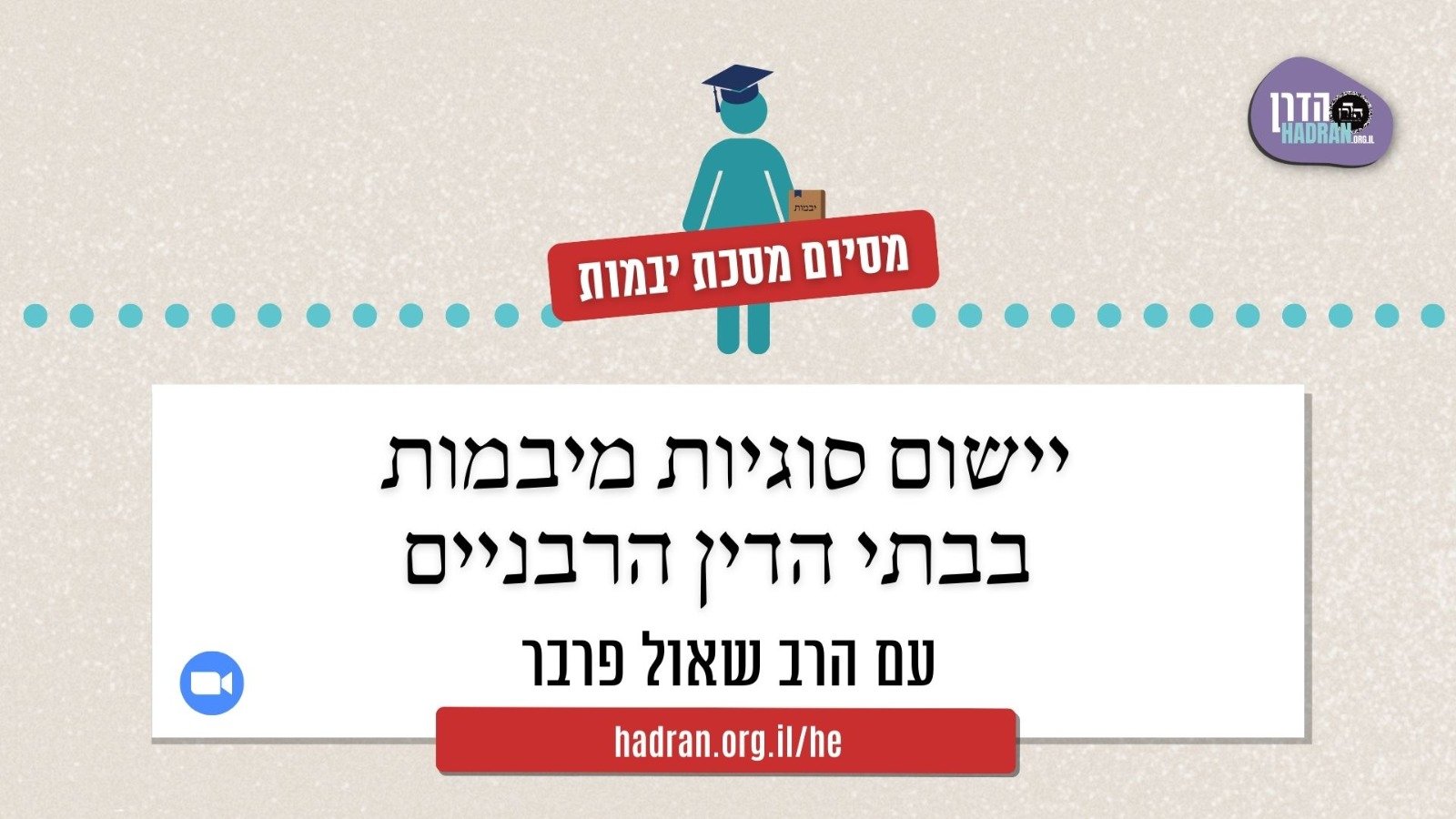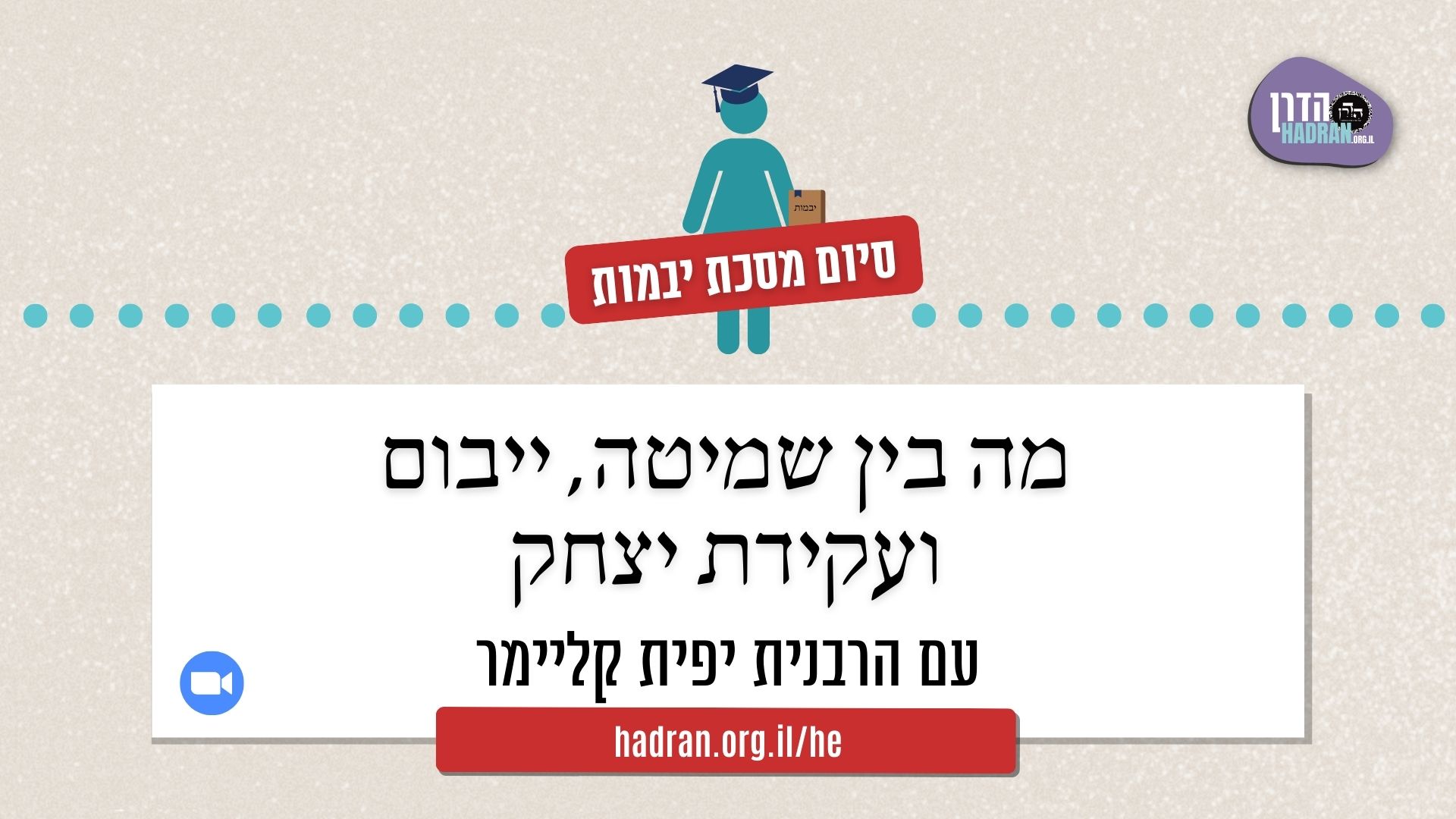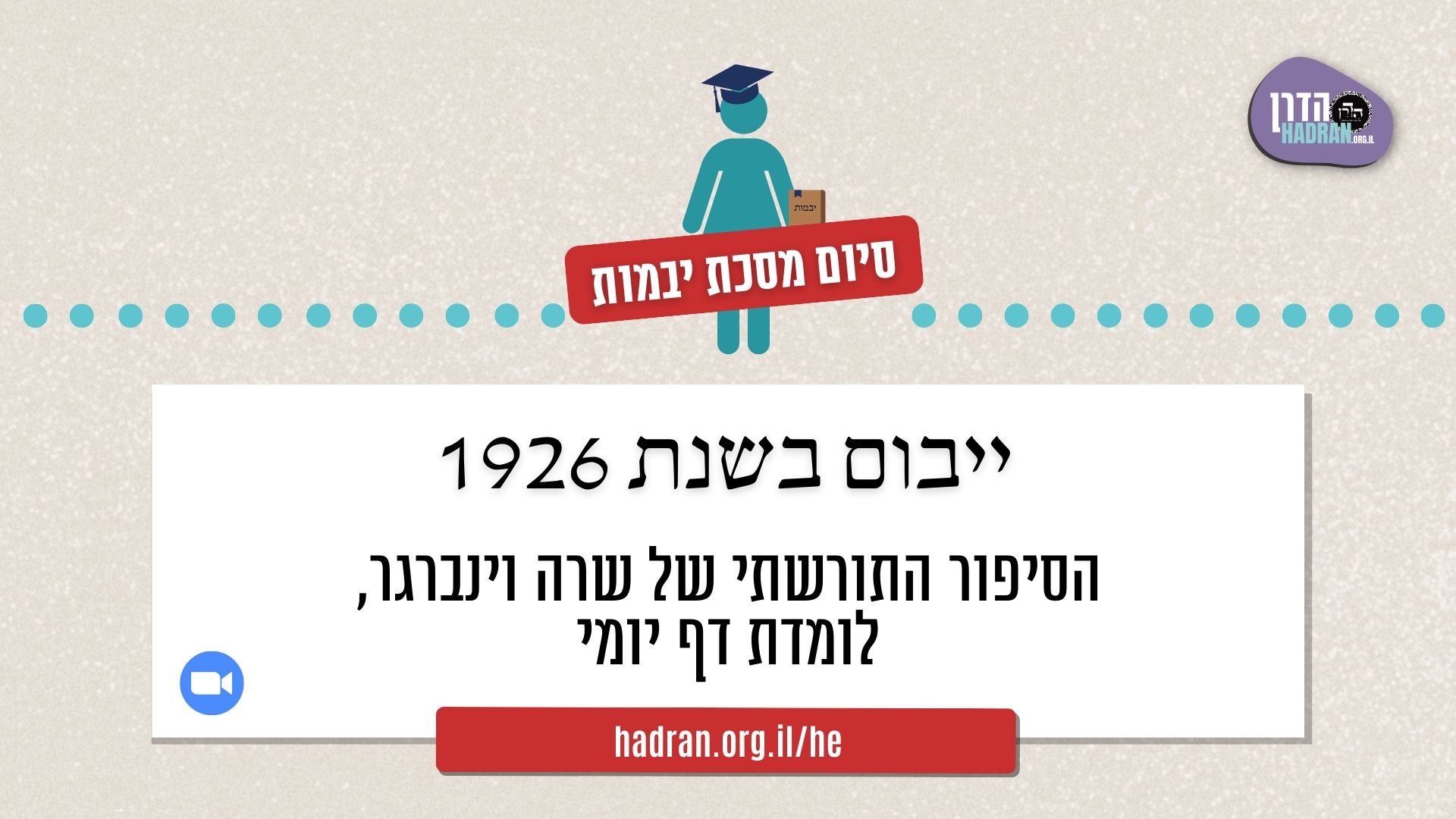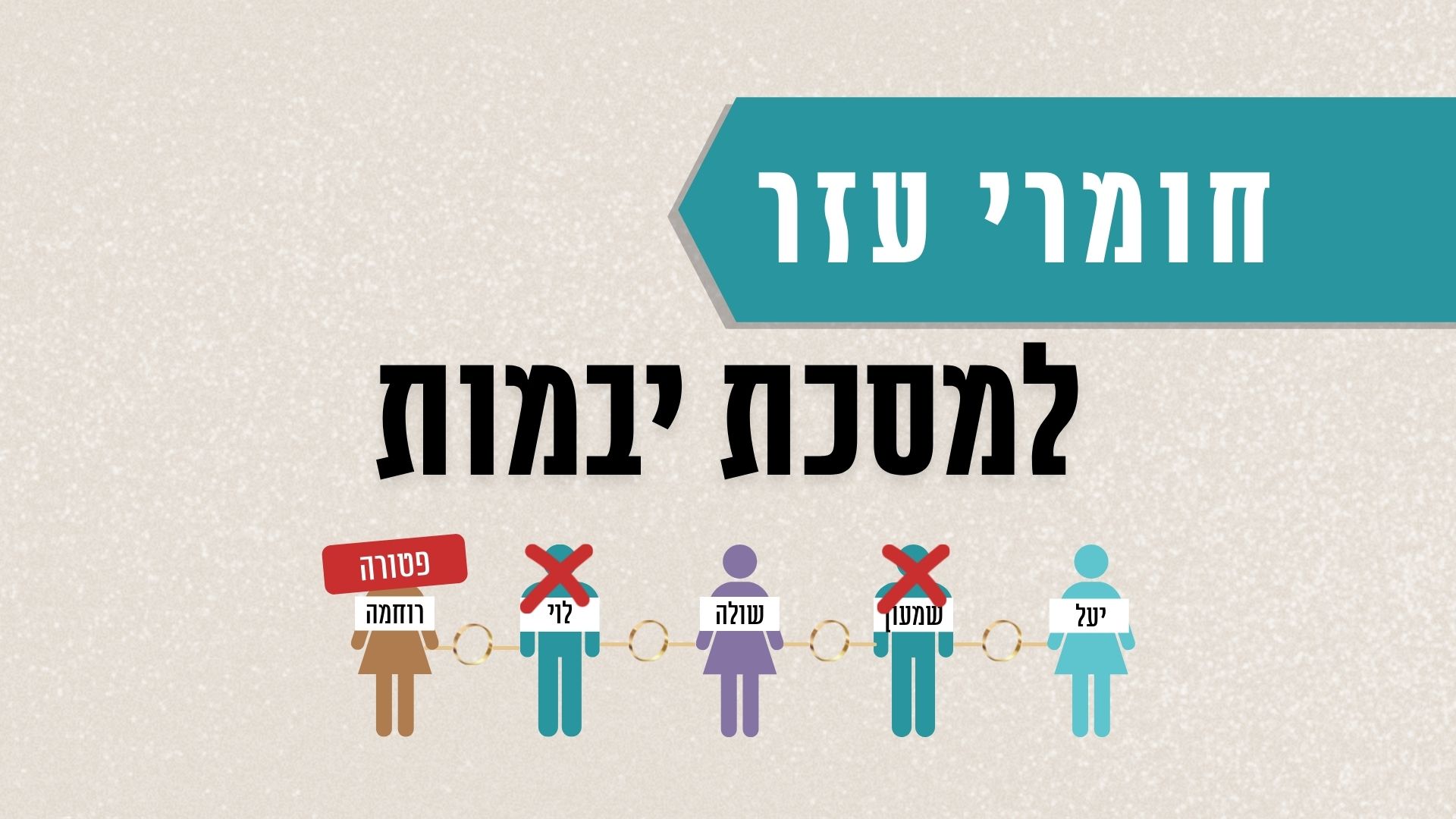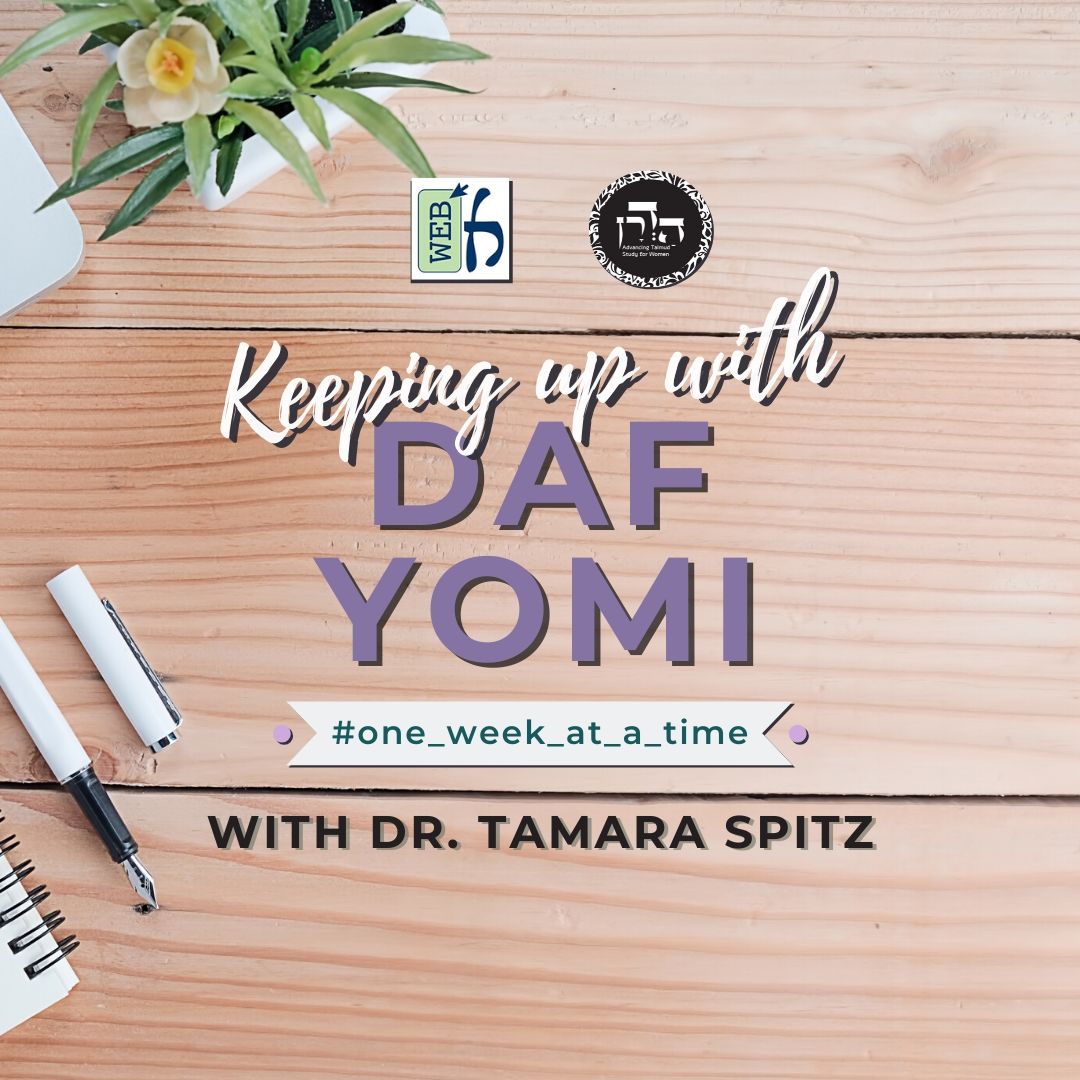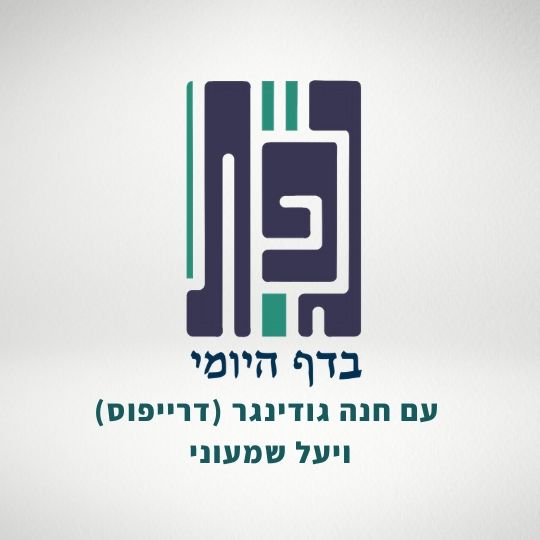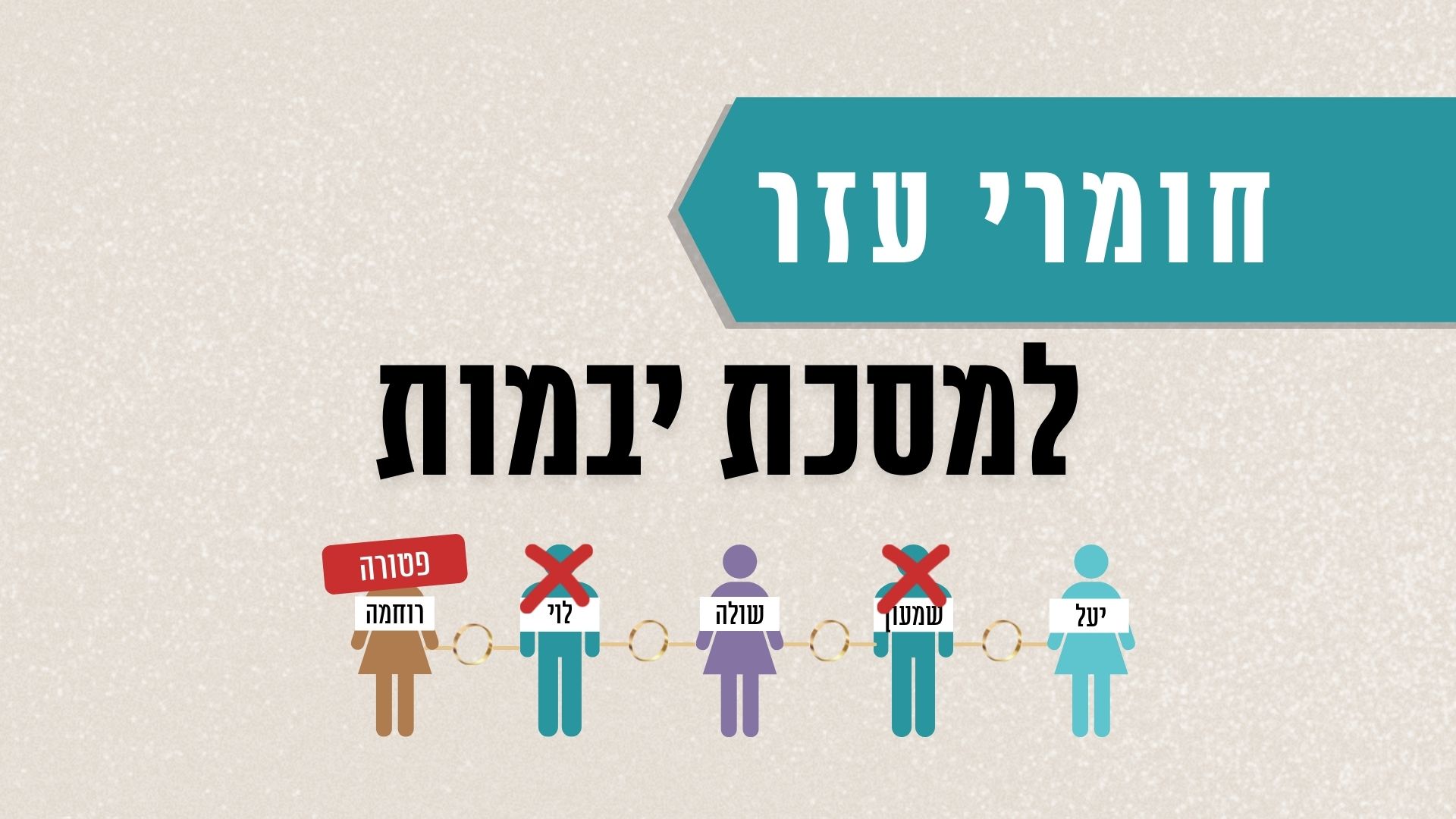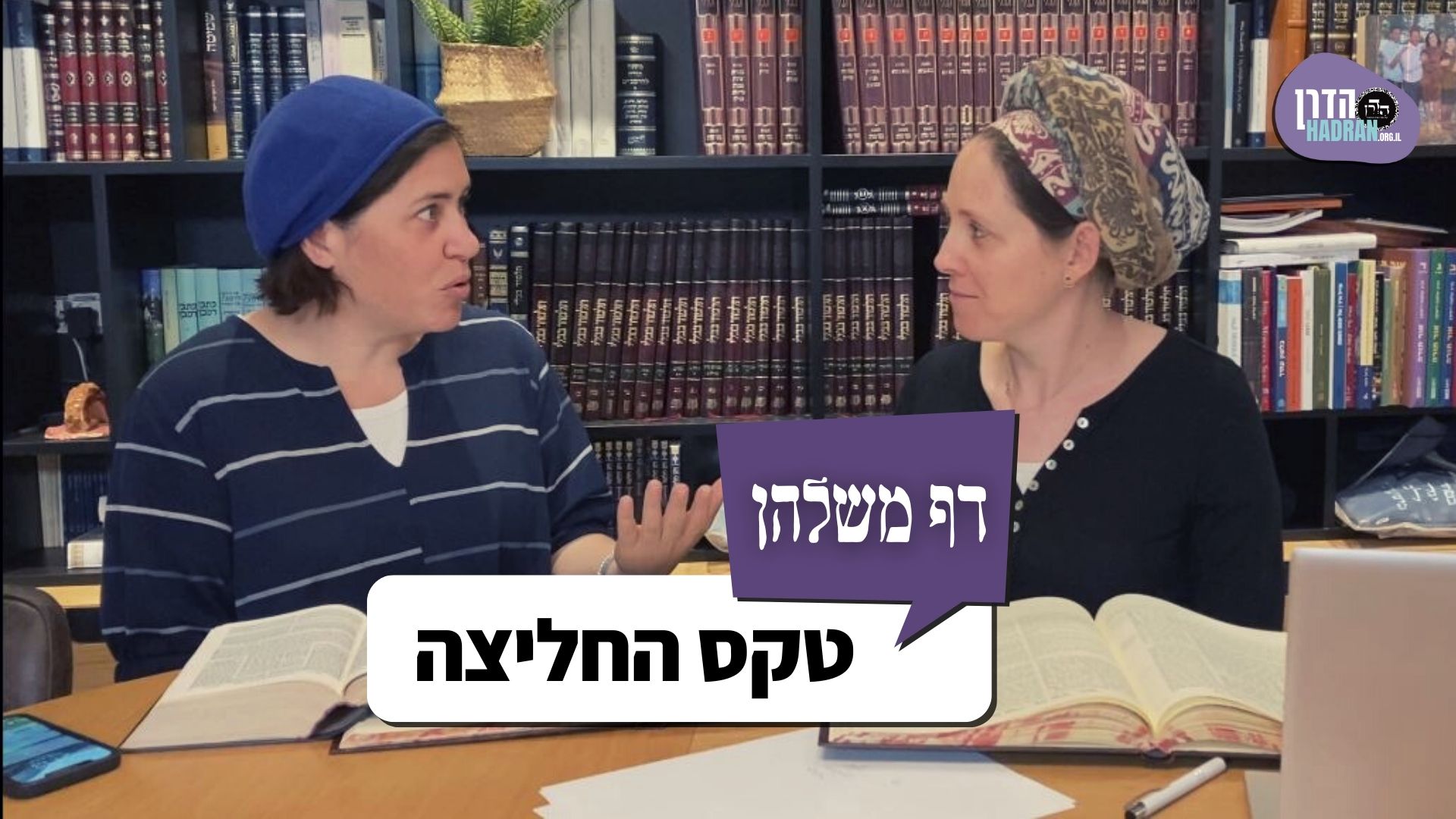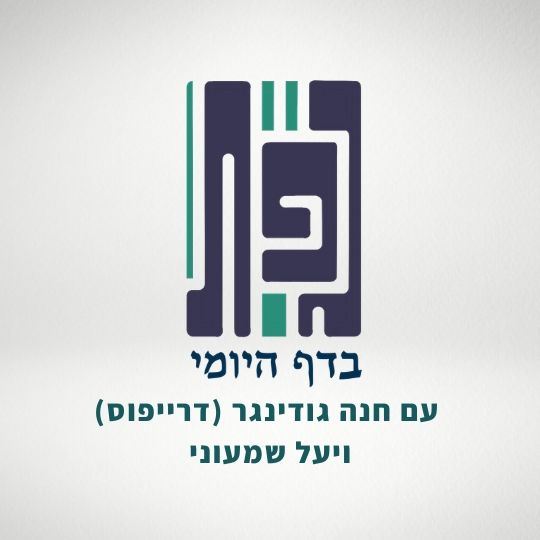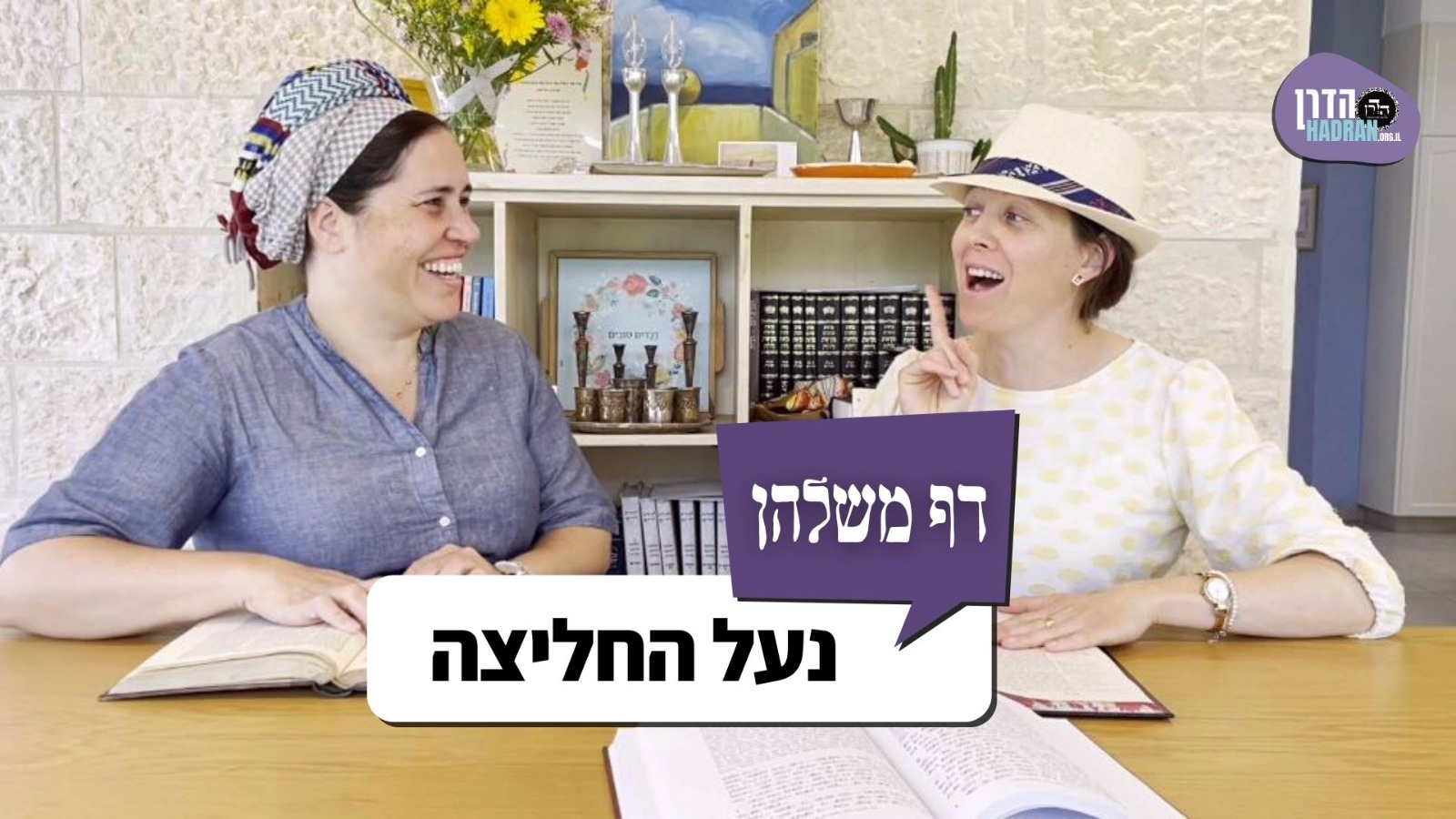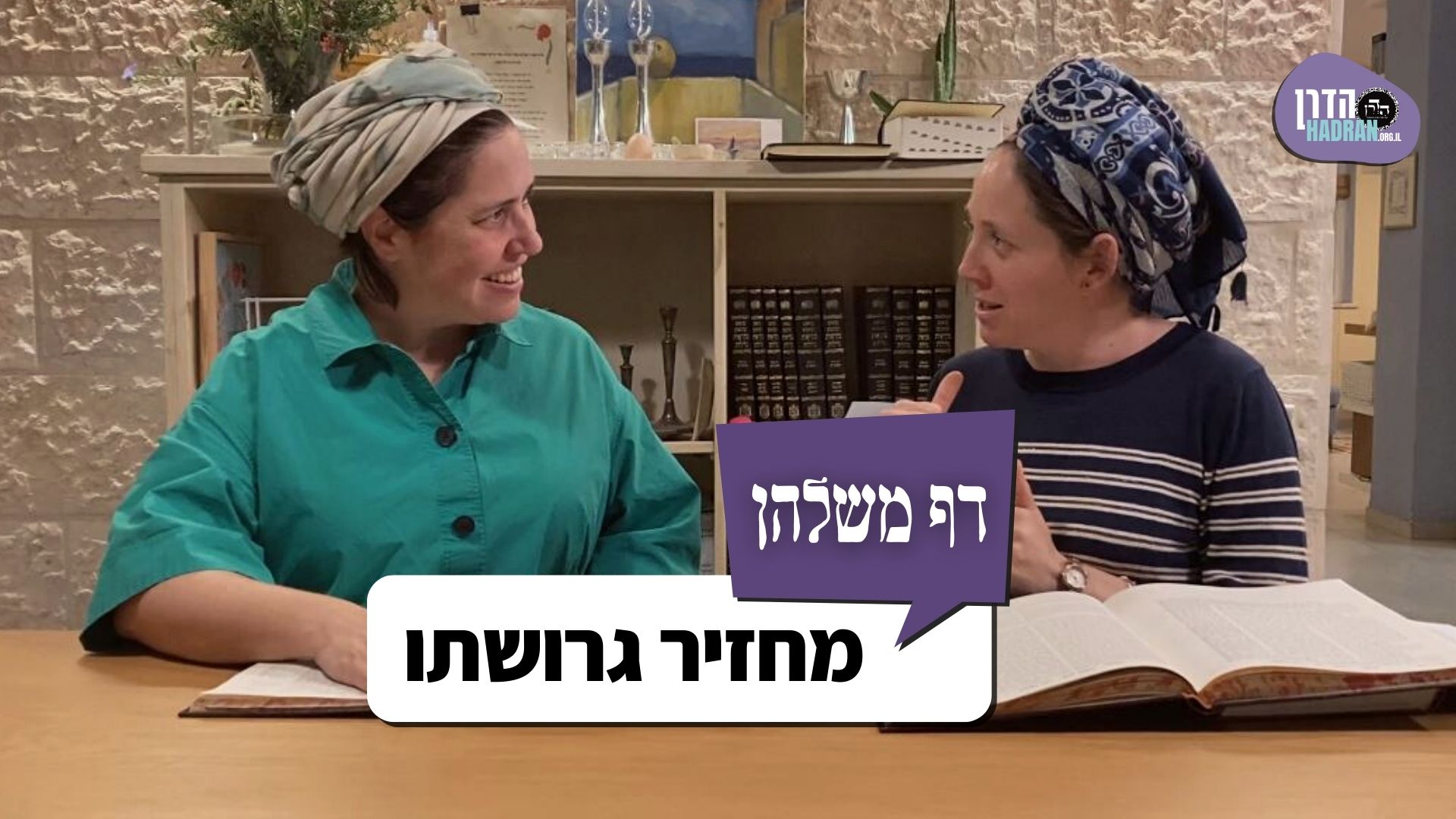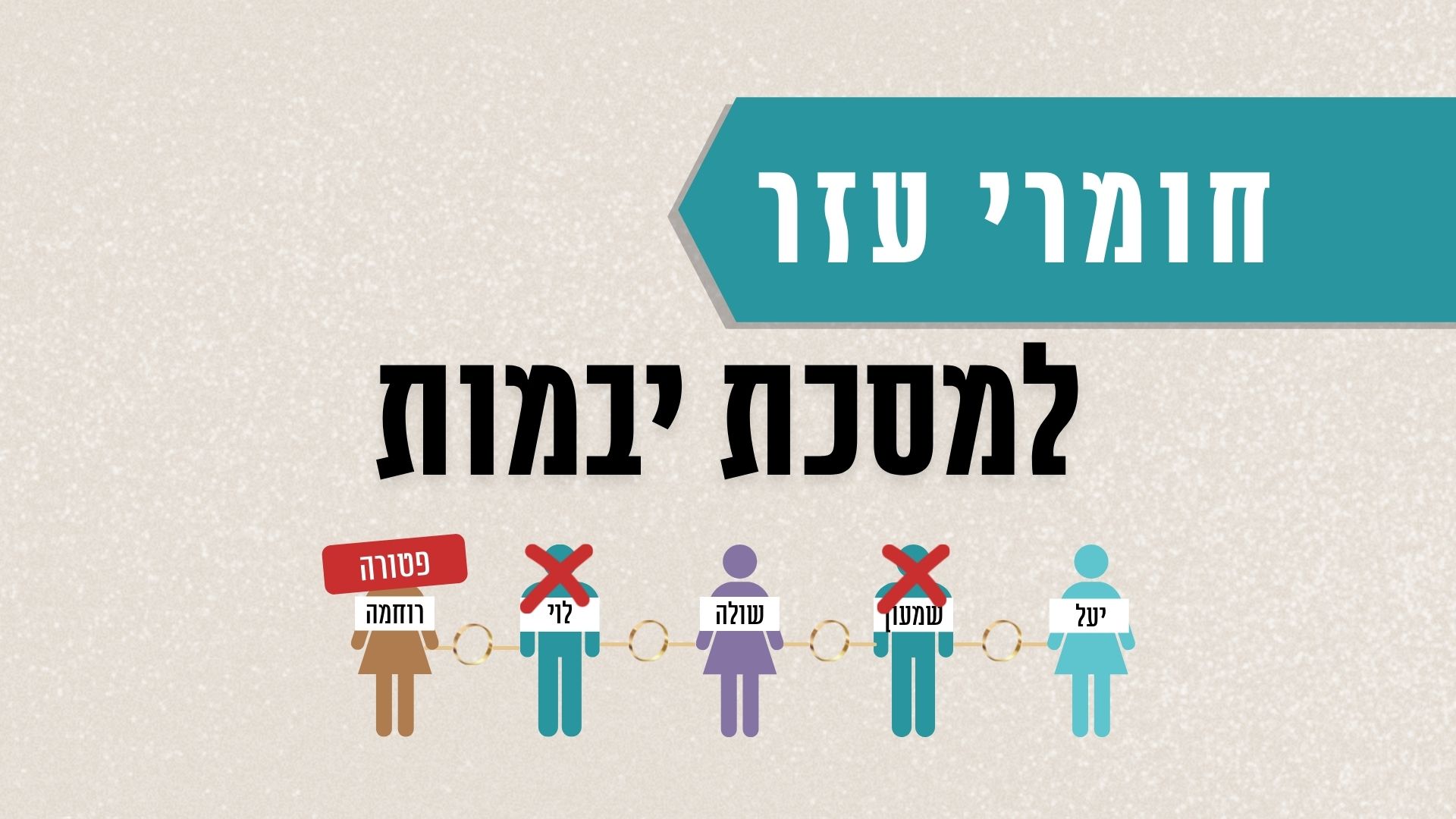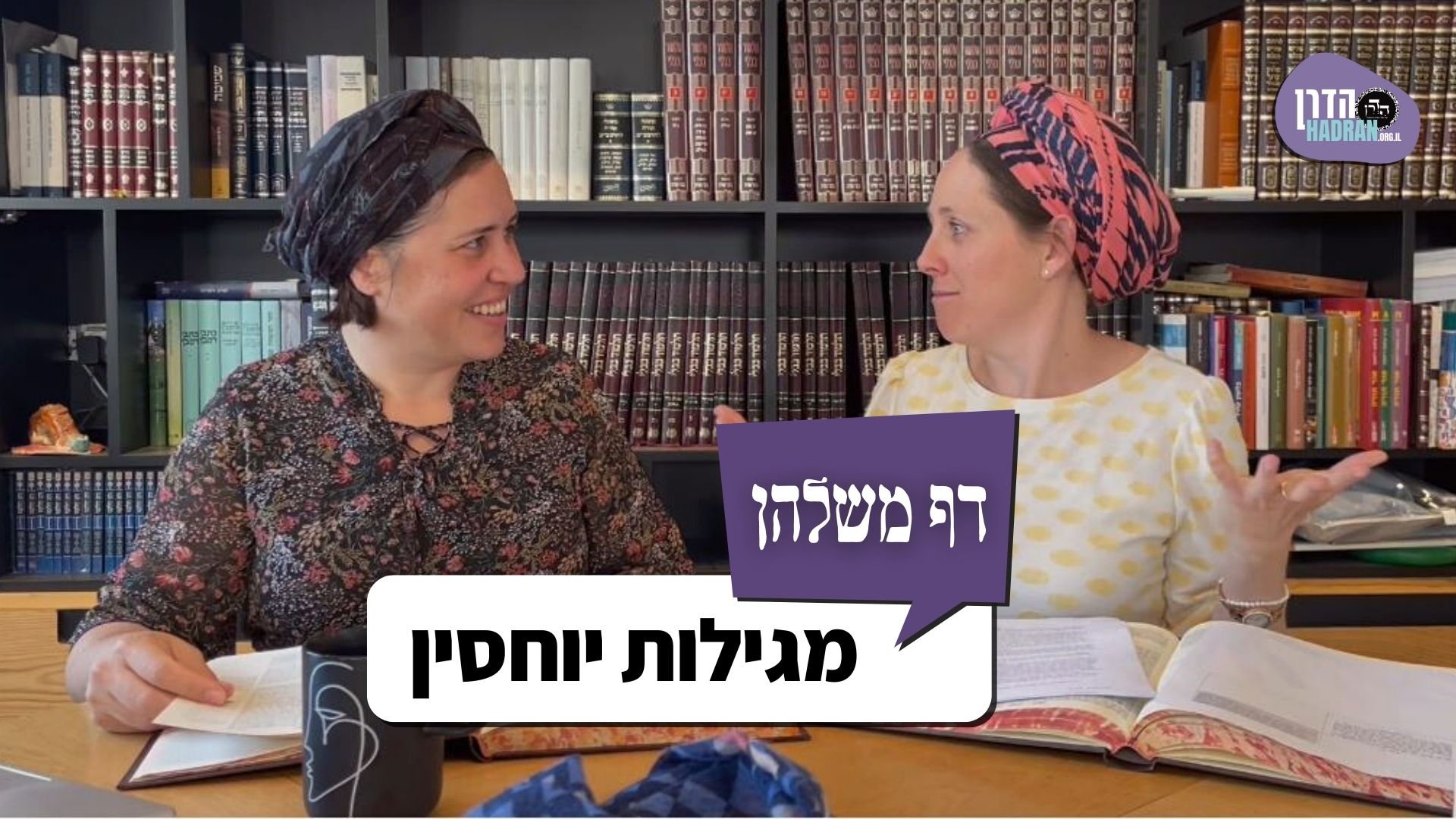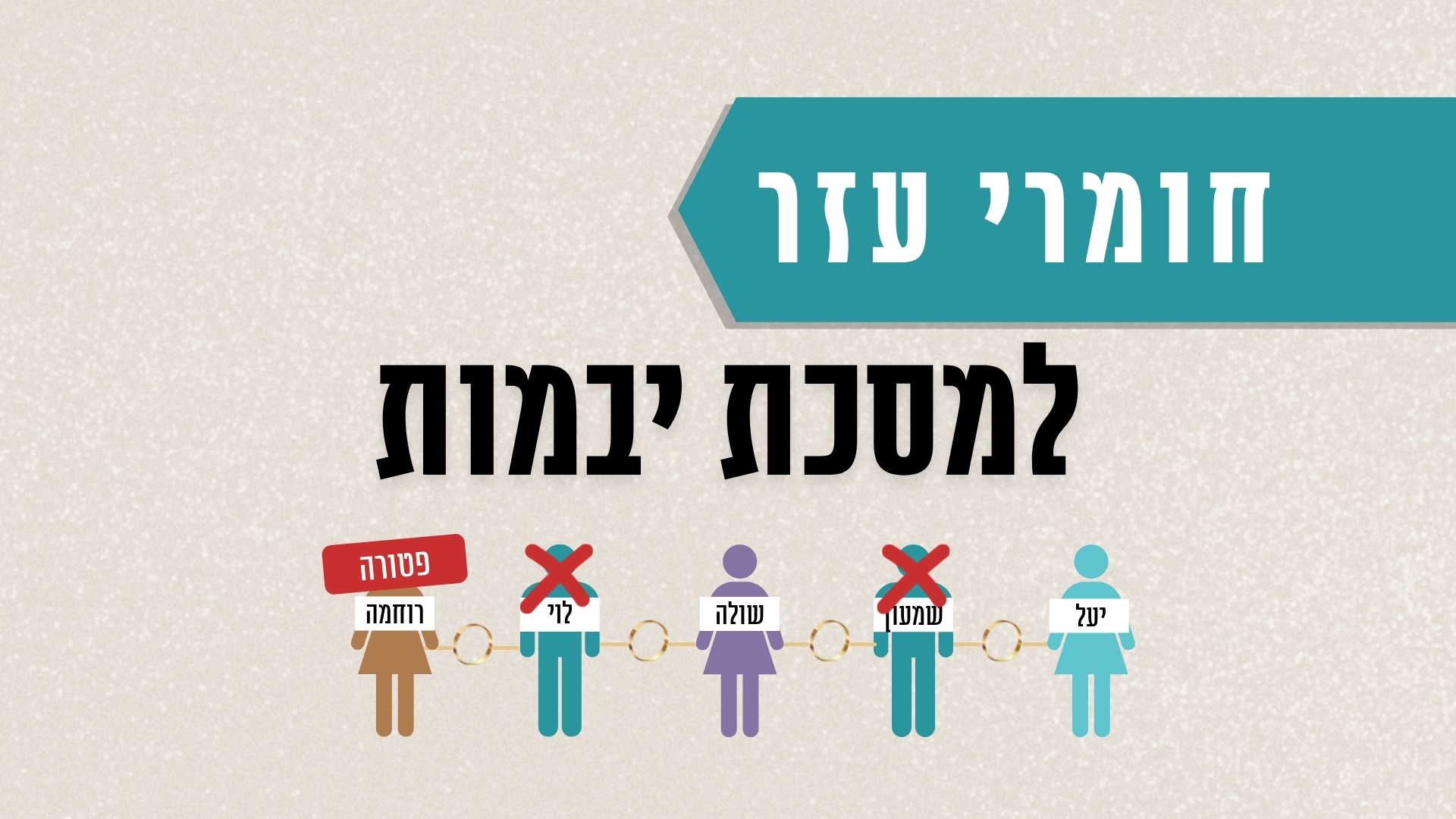יבמות ד
דִּכְתִיב: ״לֹא תִלְבַּשׁ שַׁעַטְנֵז״, ״גְּדִלִים תַּעֲשֶׂה לָּךְ״.
As it is written: “You shall not wear diverse kinds of wool and linen together. You shall make for yourself twisted fringes on the four corners of your covering with which you cover yourself” (Deuteronomy 22:11–12). These verses teach that despite the prohibition against wearing diverse kinds of wool and linen, it is permitted to prepare ritual fringes of diverse kinds, e.g., sky-blue dyed threads of wool on linen garments. This shows that the positive mitzva of ritual fringes overrides the prohibition of diverse kinds.
וְאָמַר רַבִּי אֶלְעָזָר: סְמוּכִים מִן הַתּוֹרָה מִנַּיִן, שֶׁנֶּאֱמַר: ״סְמוּכִים לָעַד לְעוֹלָם עֲשׂוּיִם בֶּאֱמֶת וְיָשָׁר״.
And Rabbi Elazar said: From where in the Torah is it derived that one may draw homiletical interpretations from the juxtaposition of verses? In other words, from where is it derived that the fact that certain verses are adjacent one to the other is a reason to apply the halakhot from one verse to the other? As it is stated: “The works of His hands in truth and justice, all His commandments are sure. Juxtaposed forever and ever, made in truth and uprightness” (Psalms 111:7–8). This verse indicates that it is appropriate to draw inferences from the juxtaposition of God’s commandments.
וְאָמַר רַב שֵׁשֶׁת אָמַר רַבִּי אֶלְעָזָר מִשּׁוּם רַבִּי אֶלְעָזָר בֶּן עֲזַרְיָה: מִנַּיִן לִיבָמָה שֶׁנָּפְלָה לִפְנֵי מוּכֵּה שְׁחִין שֶׁאֵין חוֹסְמִין אוֹתָהּ — שֶׁנֶּאֱמַר: ״לֹא תַחְסוֹם שׁוֹר בְּדִישׁוֹ״, וּסְמִיךְ לֵיהּ: ״כִּי יֵשְׁבוּ אַחִים יַחְדָּיו״.
And similarly, Rav Sheshet said that Rabbi Elazar said in the name of Rabbi Elazar ben Azarya: From where is it derived with regard to a yevama who came before a yavam afflicted with boils that one may not muzzle her, i.e., she cannot be forced to enter into levirate marriage, and he is compelled to release her by ḥalitza? As it is stated: “You shall not muzzle an ox while it treads out the corn” (Deuteronomy 25:4), and, juxtaposed to it, is the verse: “If brothers dwell together” (Deuteronomy 25:5), which begins the passage that deals with the halakhot of levirate marriage. This teaches that just as it is prohibited to muzzle the ox, so too, one may not muzzle and ignore the complaints of a yevama who does not wish to marry a yavam afflicted with boils.
וְאָמַר רַב יוֹסֵף: אֲפִילּוּ לְמַאן דְּלָא דָּרֵישׁ סְמוּכִים בְּעָלְמָא, בְּמִשְׁנֵה תוֹרָה דָּרֵישׁ. דְּהָא רַבִּי יְהוּדָה בְּעָלְמָא לָא דָּרֵישׁ, וּבְמִשְׁנֵה תוֹרָה דָּרֵישׁ.
And Rav Yosef said: Even according to the one who does not generally derive homiletic interpretations from juxtaposed verses, nevertheless, he does derive them from Deuteronomy, as Rabbi Yehuda does not generally derive homiletic interpretations from juxtaposed verses, and yet he does derive them from Deuteronomy.
וּבְעָלְמָא מְנָלַן דְּלָא דָּרֵישׁ? דְּתַנְיָא: בֶּן עַזַּאי אוֹמֵר, נֶאֱמַר: ״מְכַשֵּׁפָה לֹא תְחַיֶּה״, וְנֶאֱמַר: ״כׇּל שׁוֹכֵב עִם בְּהֵמָה מוֹת יוּמָת״, סְמָכוֹ עִנְיָן לוֹ: מָה שׁוֹכֵב עִם בְּהֵמָה בִּסְקִילָה — אַף מְכַשֵּׁפָה בִּסְקִילָה.
§ The Gemara asks: And from where do we derive that Rabbi Yehuda generally does not derive homiletic interpretations from juxtaposed verses? As it is taught in a baraita with regard to the punishment of a sorceress that ben Azzai says that it is stated: “You shall not allow a sorceress to live” (Exodus 22:17), although the manner of her execution is not specified, and it is stated: “Whoever lies with a beast shall surely be put to death” (Exodus 22:18). The Torah juxtaposed this matter to that so as to say: Just as one who lies with a beast is executed by stoning (see Leviticus 20:16), so too, a sorceress is executed by stoning.
אָמַר לוֹ רַבִּי יְהוּדָה: וְכִי מִפְּנֵי שֶׁסְּמָכוֹ עִנְיָן לוֹ, נוֹצִיא זֶה לִסְקִילָה?
With regard to this proof, Rabbi Yehuda said to ben Azzai: And simply due to the fact that the Torah juxtaposed this matter to that one, shall we take this person out to be stoned? Should he be sentenced to the most severe of the death penalties on the basis of a juxtaposition of passages?
אֶלָּא: אוֹב וְיִדְּעוֹנִי בִּכְלַל מְכַשְּׁפִים הָיוּ, וְלָמָּה יָצְאוּ? לְהַקִּישׁ לָהֶם וְלוֹמַר לָךְ: מָה אוֹב וְיִדְּעוֹנִי בִּסְקִילָה — אַף מְכַשֵּׁפָה בִּסְקִילָה.
Rather, Rabbi Yehuda claims that the source is the following statement: Mediums and wizards were included among all sorcerers. And why were they singled out from the rest in the verse: “And a man or a woman who is a medium or a wizard shall surely be put to death; they shall stone them with stones, their blood is upon them” (Leviticus 20:27)? It is to draw an analogy to them and say to you: Just as a medium and a wizard are executed by stoning, so too, a sorceress is executed by stoning. This shows that Rabbi Yehuda does not derive homiletic interpretations from juxtaposed verses.
וּבְמִשְׁנֵה תוֹרָה מְנָלַן דְּדָרֵישׁ? דִּתְנַן: נוֹשֵׂא אָדָם אֲנוּסַת אָבִיו וּמְפוּתַּת אָבִיו, אֲנוּסַת בְּנוֹ וּמְפוּתַּת בְּנוֹ. רַבִּי יְהוּדָה אוֹסֵר בַּאֲנוּסַת אָבִיו וּמְפוּתַּת אָבִיו.
§ And from where do we derive that Rabbi Yehuda does derive homiletic interpretations in Deuteronomy? As we learned in a mishna: A person may wed a woman raped by his father and one seduced by his father, despite the fact that his father’s wife is forbidden to him. Similarly, he may marry a woman raped by his son and one seduced by his son. Although one is prohibited by Torah law from marrying the wife of his father or the wife of his son, these prohibitions do not apply to a woman raped or seduced by them. And Rabbi Yehuda prohibits him from marrying a woman raped by his father and a woman seduced by his father.
וְאָמַר רַב גִּידֵּל אָמַר רַב: מַאי טַעְמָא דְּרַבִּי יְהוּדָה, דִּכְתִיב: ״לֹא יִקַּח אִישׁ אֶת אֵשֶׁת אָבִיו וְלֹא יְגַלֶּה כְּנַף אָבִיו״, כָּנָף שֶׁרָאָה אָבִיו — לֹא יְגַלֶּה.
And Rav Giddel said that Rav said: What is the reason for Rabbi Yehuda’s opinion? As it is written: “A man shall not take his father’s wife, and shall not uncover his father’s skirt” (Deuteronomy 23:1). The latter expression: “And shall not uncover his father’s skirt,” is referring to a skirt that has been seen by his father, i.e., any woman who has had relations with his father may not be uncovered by his son, meaning that his son may not marry her.
וּמִמַּאי דְּבַאֲנוּסָה כְּתִיב — מֵעִילָּוֵיהּ דִּקְרָא, דִּכְתִיב: ״וְנָתַן הָאִישׁ הַשּׁוֹכֵב עִמָּהּ לַאֲבִי הַנַּעֲרָה חֲמִשִּׁים כָּסֶף״, וּסְמִיךְ לֵיהּ: ״לֹא יִקַּח אִישׁ וְגוֹ׳״.
And from where is it known that the verse is written with regard to a woman raped by his father? It is from the previous verse, which deals with the halakhot of rape, as it is written: “And the man who lay with her must give the maiden’s father fifty shekels of silver” (Deuteronomy 22:29), and juxtaposed to it is the verse: “A man shall not take his father’s wife and shall not uncover his father’s skirt.” This shows that Rabbi Yehuda does derive homiletic interpretations from juxtaposed verses in Deuteronomy.
וְרַבָּנַן: אִי הֲוָה סְמִיךְ לֵיהּ, כִּדְקָאָמְרַתְּ. הַשְׁתָּא דְּלָא סְמִיךְ לֵיהּ (דִּכְתִיב ״לֹא יִקַּח אִישׁ אֶת אֵשֶׁת אָבִיו״ בֵּנְתַיִם) —
§ The Gemara asks: And how do the Rabbis, who disagree with the opinion of Rabbi Yehuda, respond to this argument? They say: If the two verses were fully juxtaposed, it would be interpreted as you said. However, now that it is not properly juxtaposed, as it is written: “A man shall not take his father’s wife,” in between the halakhot of rape and the pronouncement with regard to uncovering one’s father’s garment, this serves to break the juxtaposition.
בְּשׁוֹמֶרֶת יָבָם הַכָּתוּב מְדַבֵּר, וְלַעֲבוֹר עָלָיו בִּשְׁנֵי לָאוִין.
Consequently, this particular verse concerning the uncovering of one’s father’s garment is speaking of a woman waiting for her yavam, in this case one’s father. In other words, the yevama of a father who is waiting for levirate marriage to the father is already considered “his father’s skirt,” and she is therefore forbidden to the son. Although this woman who is awaiting levirate marriage is in fact his uncle’s wife and explicitly prohibited to him in any case, this passage comes to teach that he violates two prohibitions. In other words, were he to engage in relations with her he would be penalized both for relations with his uncle’s wife and relations with “his father’s skirt.”
וּבְמִשְׁנֵה תוֹרָה מַאי טַעְמָא דְּדָרֵישׁ? אִיבָּעֵית אֵימָא — מִשּׁוּם דְּמוֹכַח, וְאִיבָּעֵית אֵימָא — מִשּׁוּם דְּמוּפְנֵי.
§ The Gemara asks: But as Rabbi Yehuda does not generally derive homiletic interpretations from juxtaposed verses, what is the reason that he derives these interpretations in Deuteronomy? The Gemara responds: If you wish, say that it is because it is evident from the context; and if you wish, say instead that it is because this verse is extraneous and is therefore free for this inference.
אִיבָּעֵית אֵימָא מִשּׁוּם דְּמוֹכַח — דְּאִם כֵּן לִכְתְּבֵיהּ רַחֲמָנָא גַּבֵּי עֲרָיוֹת. וְאִיבָּעֵית אֵימָא מִשּׁוּם דְּמוּפְנֵי — דְּאִם כֵּן לִכְתּוֹב רַחֲמָנָא: ״לֹא יִקַּח אִישׁ אֶת אֵשֶׁת אָבִיו״, ״לֹא יְגַלֶּה כְּנַף אָבִיו״ לְמָה לִי?
The Gemara elaborates: If you wish, say it is because it is evident; as, if it is so that the verse did not intend to teach by juxtaposition, let the Merciful One write this halakha prohibiting marriage to a father’s wife alongside the other women with whom relations are forbidden, in Leviticus. Since this verse is out of place, it is certainly coming to teach by way of juxtaposition. And if you wish, say instead that it is because this verse is free, as, if it is so that the verse is not coming to teach an additional halakha, let the Merciful One write only: “A man shall not take his father’s wife.” Why do I need the phrase: “And shall not uncover his father’s skirt”? This phrase is superfluous, and therefore it teaches by juxtaposition.
שְׁמַע מִינַּהּ לְאַפְנוֹיֵי. וְגַבֵּי צִיצִית נָמֵי, אִיבָּעֵית אֵימָא — מִשּׁוּם דְּמוֹכַח, וְאִיבָּעֵית אֵימָא — מִשּׁוּם דְּמוּפְנֶה.
Learn from this that this phrase is free to teach an additional halakha. And with regard to ritual fringes as well, there is a particular reason to derive a homiletic interpretation from the juxtaposition of verses. If you wish, say that it is because it is evident from the context, and if you wish, say instead that it is because this verse is free for this inference.
אִיבָּעֵית אֵימָא מִשּׁוּם דְּמוֹכַח — דְּאִם כֵּן לִכְתְּבֵיהּ רַחֲמָנָא גַּבֵּי פָּרָשַׁת צִיצִית, לְמַאי הִלְכְתָא כַּתְבֵיהּ הָכָא? וְאִיבָּעֵית אֵימָא מִשּׁוּם דְּמוּפְנֶה — מִכְּדִי כְּתַב: ״וּבֶגֶד כִּלְאַיִם שַׁעַטְנֵז לֹא יַעֲלֶה עָלֶיךָ״, ״לֹא תִלְבַּשׁ שַׁעַטְנֵז״ לְמָה לִי? שְׁמַע מִינַּהּ לְאַפְנוֹיֵי.
The Gemara elaborates: If you wish, say it is because it is evident; as, if it is so that no inference should be drawn from the adjacent verses, let the Merciful One write this verse by the portion of ritual fringes (Numbers, chapter 15). With regard to what halakha did the Torah write it here? Clearly, the Torah is teaching a halakha from the adjacent verses. And if you wish, say it is because this verse is free, since the Torah has already written: “Neither shall there come upon you a garment of diverse kinds mingled together” (Leviticus 19:19). Why, then, do I need the verse: “You shall not wear diverse kinds, wool and linen together” (Deuteronomy 22:11)? Learn from this that the verse is free for the derivation of a homiletic interpretation from juxtaposed verses.
הָנֵי מִצְרָךְ צְרִיכִי, דְּאִי כְּתַב רַחֲמָנָא ״לֹא יַעֲלֶה עָלֶיךָ״, הָוֵה אָמֵינָא: כׇּל דֶּרֶךְ הַעֲלָאָה אֲסַר רַחֲמָנָא, וַאֲפִילּוּ מוֹכְרֵי כְסוּת, כְּתַב רַחֲמָנָא ״לֹא תִלְבַּשׁ שַׁעַטְנֵז״, דּוּמְיָא דִלְבִישָׁה, דְּאִית בֵּיהּ הֲנָאָה.
The Gemara rejects this explanation: Both of these verses are necessary, as, had the Merciful One written only: “Neither shall there come upon you,” I would say that the Merciful One prohibits every manner by which a garment of diverse kinds comes upon you, and this applies even to sellers of coverings, who do not wear the garments but merely rest them on their shoulders. Therefore, the Merciful One writes: “You shall not wear diverse kinds,” to teach that the prohibition applies only in cases similar to wearing, which provides benefit and does not simply involve placing the covering upon oneself.
וְאִי כְּתַב רַחֲמָנָא ״לֹא תִלְבַּשׁ״, הֲוָה אָמֵינָא: דַּוְקָא לְבִישָׁה, דִּנְפִישׁ הֲנָיָיתַהּ, אֲבָל הַעֲלָאָה — לָא, כְּתַב רַחֲמָנָא ״לֹא יַעֲלֶה עָלֶיךָ״.
And had the Merciful One written only: “You shall not wear,” I would say that this means specifically wearing, which provides significant benefit, both warmth and adornment, but merely placing a garment of diverse kinds upon oneself is not prohibited, even if one is warmed by the clothing. Therefore, the Merciful One writes: “Neither shall there come upon you.”
אִם כֵּן, לִכְתּוֹב רַחֲמָנָא ״לֹא תִלְבַּשׁ שַׁעַטְנֵז״, ״צֶמֶר וּפִשְׁתִּים״ לְמָה לִי?
The Gemara challenges: In any case part of the verse is superfluous, as, if so, let the Merciful One write only: “You shall not wear diverse kinds.” Why do I need the addition of “wool and linen”? The definition of diverse kinds in clothing is already known from another source.
מִכְּדִי כְּתַב ״וּבֶגֶד כִּלְאַיִם שַׁעַטְנֵז לֹא יַעֲלֶה עָלֶיךָ״, וְתָנָא דְּבֵי רַבִּי יִשְׁמָעֵאל: הוֹאִיל וְנֶאֶמְרוּ בַּתּוֹרָה סְתָם ״בְּגָדִים״, וּפָרַט לְךָ הַכָּתוּב בְּאֶחָד מֵהֶן צֶמֶר וּפִשְׁתִּים — אַף כֹּל צֶמֶר וּפִשְׁתִּים, ״צֶמֶר וּפִשְׁתִּים״ דִּכְתַב רַחֲמָנָא לְמָה לִי? שְׁמַע מִינַּהּ לְאַפְנוֹיֵי.
How so? Since it is written: “Neither shall there come upon you a garment of diverse kinds mingled together” (Leviticus 19:19), and the school of Rabbi Yishmael taught: Since the word garments is stated in the Torah unmodified, without stating from what materials those garments were made, and the verse specified in one of its references to garments, in the context of the halakhot of ritual impurity of leprosy: “A woolen garment or a linen garment” (Leviticus 13:47), the following conclusion can be drawn: Just as when the Torah mentions a garment in the case of leprosy it is referring to one made of wool or linen, so too, all garments mentioned in the Torah are those made from wool or linen. Other fabrics are not classified as those used for garments. If so, why do I need the phrase: “Wool and linen” that the Merciful One wrote with regard to diverse kinds? Learn from this that the superfluous passage is free.
וְאַכַּתִּי אִיצְטְרִיךְ, סָלְקָא דַּעְתָּךְ אָמֵינָא: הַעֲלָאָה הִיא דְּלָא נְפִישׁ הֲנָאָתַהּ, אֲבָל לְבִישָׁה דִּנְפִישׁ הֲנָיָיתַהּ — כֹּל תְּרֵי מִינֵי אֲסַר רַחֲמָנָא, כְּתַב רַחֲמָנָא ״צֶמֶר וּפִשְׁתִּים״!
The Gemara raises a difficulty: But the verse is still necessary, as it could enter your mind to say that it is referring only to placing a garment on oneself, which does not provide great benefit; however, with regard to the actual wearing of a garment, which entails great benefit, the Merciful One prohibits wearing any two types together. Therefore, the Merciful One writes “wool and linen” with regard to wearing garments of diverse kinds as well.
אִם כֵּן, לִשְׁתּוֹק קְרָא מִינֵּיהּ, וְתֵיתֵי ״שַׁעַטְנֵז״ ״שַׁעַטְנֵז״ מֵהַעֲלָאָה.
The Gemara responds: If so, let the verse be silent and refrain from mentioning wool and linen at all, and the halakha that only wearing wool and linen together is prohibited can be derived by means of a verbal analogy between the terms “diverse kinds” (Deuteronomy 22:11), and “diverse kinds” from placing a covering of diverse kinds upon oneself (Leviticus 19:19). The repetition of wool and linen must be coming to teach that one should derive a homiletic interpretation from these juxtaposed verses.
וְתַנָּא דְּבֵי רַבִּי יִשְׁמָעֵאל: טַעְמָא דִּכְתַב רַחֲמָנָא ״צֶמֶר וּפִשְׁתִּים״, הָא לָאו הָכִי, כִּלְאַיִם בְּצִיצִית הֲוָה אָמֵינָא דַּאֲסַר רַחֲמָנָא? וְהָכְתִיב: ״וְעָשׂוּ לָהֶם צִיצִית עַל כַּנְפֵי בִגְדֵיהֶם״,
The Gemara asks: And according to that which the school of Rabbi Yishmael taught, that the mention of wool and linen is superfluous and teaches that they are not prohibited in the case of ritual fringes, the reason is that the Merciful One specifically writes wool and linen. From here it may be inferred that if that were not so, I would say that the Merciful One prohibits a mixture of diverse kinds in ritual fringes. Can it be considered that this is the case? But isn’t it written: “That they make themselves fringes on the corners of their garments” (Numbers 15:38)?
וְתַנָּא דְּבֵי רַבִּי יִשְׁמָעֵאל: כָּל בְּגָדִים צֶמֶר וּפִשְׁתִּים הֵם, וְאָמַר רַחֲמָנָא עֲבֵיד לֵיהּ תְּכֵלֶת, וּתְכֵלֶת עַמְרָא הוּא. וּמִמַּאי דִּתְכֵלֶת עַמְרָא הוּא? מִדְּשֵׁשׁ — כִּיתָּנָא, תְּכֵלֶת — עַמְרָא הוּא.
And the school of Rabbi Yishmael taught: All garments mentioned in the Torah are of wool or linen, and the Merciful One says, with regard to ritual fringes: Prepare it with a sky-blue dye, and a sky-blue dyed thread is prepared from wool. The Torah explicitly commands that at least one woolen thread of sky-blue dye must be tied even to a linen cloth, which proves that diverse kinds are permitted in the context of ritual fringes. The Gemara establishes the previous claim: And from where is it derived that the sky-blue thread is made of wool? From the fact that the Torah specifies that one of the strands of the priestly garments was made of shesh, which means linen, this indicates that the other threads, including the sky-blue thread, are from wool.
אִיצְטְרִיךְ, סָלְקָא דַּעְתָּךְ אָמֵינָא כִּדְרָבָא, דְּרָבָא רָמֵי: כְּתִיב ״הַכָּנָף״ — מִין כָּנָף, וּכְתִיב ״צֶמֶר וּפִשְׁתִּים״!
§ Returning to the question, the Gemara explains that the mention of wool and linen is necessary, as it could enter your mind to state an argument in accordance with the opinion of Rava. As Rava raised a contradiction from the following verse: It is written: “That they make themselves fringes on the corners of their garments” (Numbers 15:38). The phrase “the corners” indicates that it must be from the same type of thread as the corner, i.e., the threads of the fringes must consist of the same kind of material as the corner of the garment. And yet it is written: “Wool and linen” (Deuteronomy 22:11), which indicates that ritual fringes may be prepared from only those materials and no others.
הָא כֵּיצַד? צֶמֶר וּפִשְׁתִּים פּוֹטְרִין בֵּין בְּמִינָן, בֵּין שֶׁלֹּא בְּמִינָן. שְׁאָר מִינִין, בְּמִינָן פּוֹטְרִין, שֶׁלֹּא בְּמִינָן אֵין פּוֹטְרִין.
How so? How can this contradiction be resolved? Fringes made of wool and linen fulfill the obligation of ritual fringes whether the clothing is of the same type of material, i.e., wool or linen, or whether it is not of the same type of fabric. Conversely, with regard to all other kinds of material, if the ritual fringes are of the same kind, e.g., silk fringes on silk clothing, they fulfill the obligation, but if the cloth is not of the same type, they do not fulfill the obligation of ritual fringes. Consequently, were it not for the phrase “wool and linen,” it would have been necessary to prepare ritual fringes from the same material as the garment itself, even when using wool or linen.
וְהָא תַּנָּא דְּבֵי רַבִּי יִשְׁמָעֵאל לֵית לֵיהּ דְּרָבָא!
The Gemara asks: But the tanna from the school of Rabbi Yishmael does not maintain in accordance with this opinion of Rava, since that tanna holds that there is no obligation to place ritual fringes on clothing that is not made of wool or linen. The reason is that when the Torah speaks of garments it is referring exclusively to clothes made of wool or linen. Consequently, Rava’s interpretation with regard to different types of material does not apply to the opinion of the tanna from the school of Rabbi Yishmael.
אִיצְטְרִיךְ, סָלְקָא דַּעְתָּךְ אָמֵינָא, כִּי דִיּוּקָא דְּרָבָא: ״הַכָּנָף״ — מִין כָּנָף, וְהָכִי קָאָמַר רַחֲמָנָא: עָבֵיד לֵיהּ צֶמֶר לְצֶמֶר וּפִשְׁתִּים לְפִשְׁתִּים. וְכִי עָבְידַתְּ צֶמֶר לְצֶמֶר — צִבְעֵיהּ, אֲבָל צֶמֶר לְפִשְׁתִּים וּפִשְׁתִּים לְצֶמֶר — לָא, כְּתַב רַחֲמָנָא ״צֶמֶר וּפִשְׁתִּים״, דַּאֲפִילּוּ צֶמֶר לְפִשְׁתִּים וּפִשְׁתִּים לְצֶמֶר.
The Gemara responds: It is nevertheless necessary to state: “Wool and linen,” as it could enter your mind to say, in accordance with the inference of Rava, that the phrase “the corners” indicates that it must be from the same type of thread as the corner, but in a different manner: This is what the Merciful One is saying: Prepare for it wool fringes for a wool garment and linen fringes for a linen garment, and when you prepare wool fringes for wool clothing, dye it sky-blue. However, if you prepare wool fringes for linen garments or linen for wool clothing, you need not include a sky-blue thread. Therefore, the Merciful One states: “Wool and linen,” which teaches that one fulfills the obligation of fringes even with wool fringes for a linen garment or linen fringes for a woolen one.


